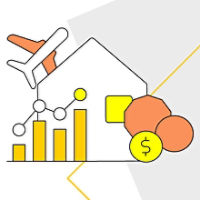“The lift we saw in spending at the end of 2024, driven by discount and sales activity, hasn’t carried through to the New Year as constrained consumers dedicate a large portion of their wallet to spending on the essentials,” CBA Senior Economist Belinda Allen said.
“The annual HSI spending growth rate has slowed considerably in February to 1.5 per cent – a result of a combination of factors, including a shorter February than the 2024 leap year and the absence of last year’s ‘Taylor Swift effect’ which boosted national spending this time last year,” she added.
According to the Index, it is a varied picture across the country with the ACT and Tasmania experiencing negative annual growth rates of -1.6 per cent and -0.2 per cent respectively, and Victoria flat at 0.7 per cent. This is compared with the faster performing states of Western Australia (+2.3 per cent), South Australia (+2.0 per cent), Queensland (+1.9 per cent) and New South Wales (+1.7 per cent).
“Annual spending has been mixed across the country and we await the March spending data to gauge the impacts of ex-tropical cyclone Alfred with parts of Queensland and northern NSW heavily impacted by the natural disaster.
“Looking ahead for the year, we believe it will take further interest rate relief to lift national consumer spending. We expect the RBA to cut interest rates in May with data for the first quarter of 2025 confirming inflation is tracking toward the RBA’s 2-3 per cent target,” Ms. Allen said.
On an annual basis, Utilities (-3.6 per cent) and Transport (-4.5 per cent) have seen the most significant spending declines – with the Index attributing this to the impact of energy rebate programs, lower petrol prices and the availability of cheaper public transport options provided by some state governments.
Renters continue to wind back spending the most, with the annual rate of spending in original per capita terms declining by 1.9 per cent, compared with those with a mortgage (-0.9 per cent) and those who own their home outright (-0.4 per cent).
The CommBank HSI index tracks month-on-month data at a macro level and is based on de-identified payments data from approximately 7 million CBA customers, comprising roughly 30 per cent of all Australian consumer transactions.


